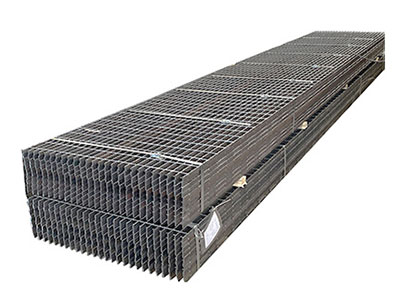Steel grating and riveted grating are two common types of grating used in various industrial and commercial applications. Both types of grating have their own unique characteristics and advantages, making it important to understand the differences between them in order to make an informed decision for your specific needs.
Steel grating is made of steel bars that are welded together to form a grid pattern. This type of grating is known for its high strength and durability, making it suitable for heavy-duty applications such as industrial flooring, catwalks, and trench covers. On the other hand, riveted grating is constructed by riveting bearing bars and cross bars with rivets. It offers excellent load-carrying capabilities and is often used in bridge decks, cubiertas de barcos, and platforms.
When comparing steel grating vs. riveted grating, it’s important to consider factors such as load capacity, open area, and cost. Steel grating typically has a higher load capacity compared to riveted grating, making it ideal for applications that require heavy loads to be supported. Additionally, steel grating offers a higher open area, allowing for better drainage and ventilation. However, riveted grating may be more cost-effective for certain projects due to its simpler manufacturing process.

In terms of installation and maintenance, both steel grating and riveted grating have their own considerations. Steel grating is often easier to install due to its welded construction, while riveted grating may require more time and effort for installation. Maintenance for steel grating involves regular cleaning and inspection to prevent corrosion, while riveted grating may require occasional re-tightening of the rivets to ensure structural integrity.
When it comes to design and aesthetics, steel grating and riveted grating offer different visual characteristics. Steel grating provides a modern and industrial look, making it a popular choice for contemporary architectural designs. On the other hand, riveted grating has a more traditional and classic appearance, making it suitable for heritage and restoration projects.
In conclusion, the choice between steel grating and riveted grating depends on the specific requirements of your project. Consider factors such as load capacity, open area, cost, installation, maintenance, and design to determine the most suitable type of grating for your application.

